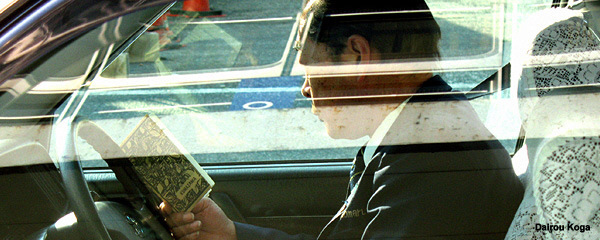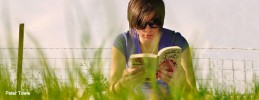
photo by Dairou Koga
by Mike Smith
If you’ve read my other pieces you’ll know by now that I find metaphors useful as a means of working towards an understanding of the process of writing.
One of them is that of ‘the journey’. The short story is a different type of journey from the long story. As it is intended to be read ‘at a sitting’ the short story is a journey without a break. I think of it as a ferry crossing, rather than a cruise, taken to get from one place to another. When we read a short story, we set off from the beginning in order to get to the end. Getting to the end is the whole point. Conversely, when we take a cruise – which is my metaphor for a novel – the point is to experience the journey and all the places we call in at along the way. That’s a very different experience.
Let’s push the ferry crossing metaphor a little, and see if it we can make it say something more about short stories. Sometimes you can see your destination from the point of departure, in which case you anticipate your arrival, though it may still take you by surprise. Sometimes the destination is out of sight, yet you still imagine it, and it may turn out to be just what you expected. Sometimes the crossing is rough. Sometimes there are distractions, dangers even, on the way.
If you have ever arrived anywhere by sea that you are used to used to arriving at by land, you will I expect, have noticed the difference. That leads me to say that the direction we arrive from, the mode of our arrival, changes the experience of the arrival itself, and here the metaphor is at its most useful. The story leading up to the ending is the controlling factor of our experience of the ending. If the point of reading a story is to get to the end, then the rest of the story is about giving that end its particular quality.
I live within sight of the English Lake District (it sticks up a bit, so you can see it a long way off). One of the walks I do involves climbing up one side of a horseshoe ridge to reach the summit and down again along the other. At the summit, you pause and look out over a view that has been on one side as you climbed up, and which will be on the other side on the way down.
One day I walked to that summit from the opposite direction, from the bottom of the U, on the outer face. There was no view, except the rising slope in front of me, until the last few paces when the false horizon fell away with breathtaking rapidity, and I found myself facing the panorama with a sheer fall at my feet. If I had been looking away, and talking, I might almost have walked over the edge, the approach to the precipice being so abrupt.
This is a metaphor for a short story too, and one that reminds me, that it is not just the summit, or end, but the starting point and the route, that gives power and impact to the arrival.
If my metaphors are appropriate, the implication is that everything we do in a short story is to heighten the impact of the end. Some short stories do this more clearly than others. Ambrose Bierce’s The Coup de Grace ends like a falling guillotine. Its power, which projects the reader into a terrifying and seemingly unavoidable future, is compressed into the last two words, but it is everything he has shown us up to that point, that has piled on the pressure. Zola’s Attack on the Mill has a similarly strong two-word ending, and again, it is what has gone before, that gives it its potency.
If you like tinkering with stories, try taking these endings and moving them. Bring them to the beginning and tell the rest in flashback and see how the story unravels. Even without moving the endings, re-ordering the content or changing the start will often weaken, or blur the focus of a story, undermining the end.
Visiting the islands in a different order may not disrupt your cruise, but going hand over hand across the chasm, you need to get your hands in the right order.

